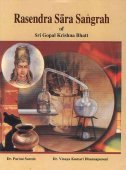Warangal, Waraṅgal: 3 definitions
Introduction:
Warangal means something in the history of ancient India, biology. If you want to know the exact meaning, history, etymology or English translation of this term then check out the descriptions on this page. Add your comment or reference to a book if you want to contribute to this summary article.
India history and geography
Source: Wikipedia: India HistoryWarangal was the ancient capital of kakatiya dynasty. It was ruled by many kings such as BetaRaja I, ProlaRaja I, BetaRaja II, ProlaRaja II, Rudradeva, Mahadeva, Ganapathideva, Prataparudra and Rani Rudrama Devi who is the only woman to rule over Telugu region. During Kakatiyan rule, Warangal was referred with various names like Orugallu, Ekasila Nagaram, or Omatikonda all these means a “single stone” referring to a huge granite boulder present in the Warangal fort.
Source: What is India: Annual Report on Indian Epigraphy (1945-1952)Waraṅgal is an archaeologically important site situated in Warangal district (Hyderabad), known for inscriptions regarding the ancient history of India. For example, at Waraṅgal there is a Sanskrit inscription on a pillar in the southern gate way of the excavated monument near the Svayambhunātha temple in medieval characters. Another inscription states that Nṛsiṃha was the author of a number of works including a history of the Kākatīyas in eight sargas.

The history of India traces the identification of countries, villages, towns and other regions of India, as well as mythology, zoology, royal dynasties, rulers, tribes, local festivities and traditions and regional languages. Ancient India enjoyed religious freedom and encourages the path of Dharma, a concept common to Buddhism, Hinduism, and Jainism.
Biology (plants and animals)
Source: Google Books: CRC World Dictionary (Regional names)Warangal in India is the name of a plant defined with Anodendron paniculatum in various botanical sources. This page contains potential references in Ayurveda, modern medicine, and other folk traditions or local practices It has the synonym Echites paniculatus Roxb., nom. illeg. (among others).
Example references for further research on medicinal uses or toxicity (see latin names for full list):
· Ann. Mus. Bot. Lugduno-Batavi (1869)
· Enumeratio Plantarum Zeylaniae (1860)
· Indian Journal of Experimental Biology (1986)
· Ethnology (1970)
· Flora Indica (1832)
· Nat. Hist. (1908)
If you are looking for specific details regarding Warangal, for example chemical composition, pregnancy safety, extract dosage, health benefits, diet and recipes, side effects, have a look at these references.

This sections includes definitions from the five kingdoms of living things: Animals, Plants, Fungi, Protists and Monera. It will include both the official binomial nomenclature (scientific names usually in Latin) as well as regional spellings and variants.
See also (Relevant definitions)
Full-text: Kurradavi, Koravi, Kakatiya, Orankal, Kridabhiramam, Prola, Natavadi.
Relevant text
Search found 11 books and stories containing Warangal, Waraṅgal; (plurals include: Warangals, Waraṅgals). You can also click to the full overview containing English textual excerpts. Below are direct links for the most relevant articles:
Who’s Who < [October – December, 2004]
Who’s Who < [January – March, 2007]
Who’s Who Among Our Contributors < [April – June, 1998]
The history of Andhra country (1000 AD - 1500 AD) (by Yashoda Devi)
Part 12 - Chittapa Khana (A.D. 1503) < [Chapter XV - The Nagas]
Part 9 - The Second Kolanu dynasty—The Inulure Family < [Chapter X - The Saronathas (A.D. 950-1260)]
Part 49 - Tonda and Chodabhimanarayana (A.D. 1250-1282) < [Chapter XX - The Telugu Cholas (Chodas)]
Narayaniya (Narayaneeyam) (by Vishwa Adluri)
Preceptors of Advaita (by T. M. P. Mahadevan)
(iv) Potana < [56. Some Authors of Works in Regional Languages]
Amaravati Art in the Context of Andhra Archaeology (by Sreyashi Ray chowdhuri)
Archaeological sites of Early Andhra Pradesh (Andhradeśa) < [Chapter 2 - Amarāvatī and other Archaeological Sites of Ancient Andhra Pradesh]
Later Chola Temples (by S. R. Balasubrahmanyam)
Temples in Seranur < [Chapter XII - Temples of Kulottunga III’s Time]
Part I - Manavalap-perumal and Kopperunjinga < [Chapter XVII - Chola-Pallava Phase (The Later Pallavas)]
Related products
